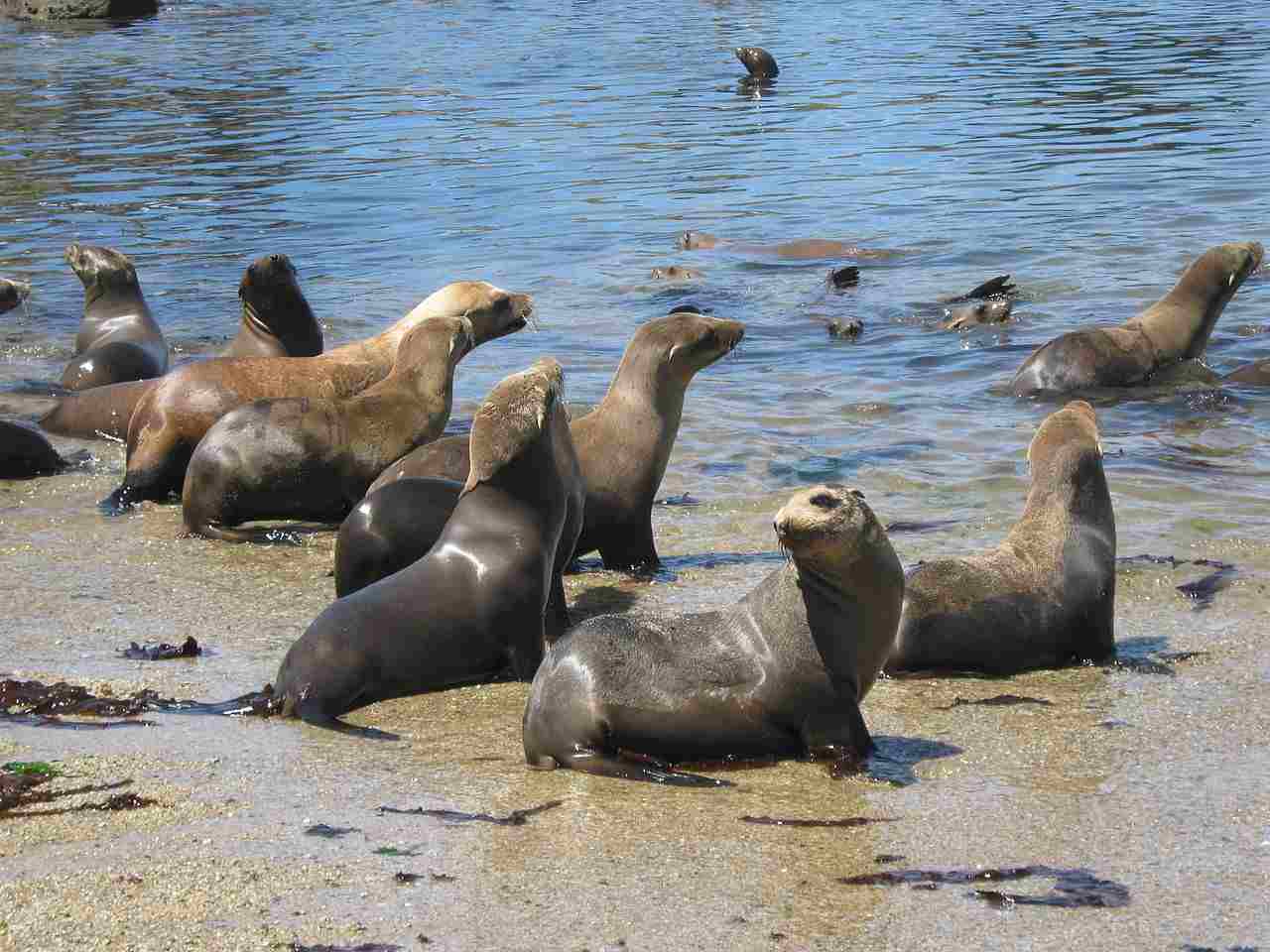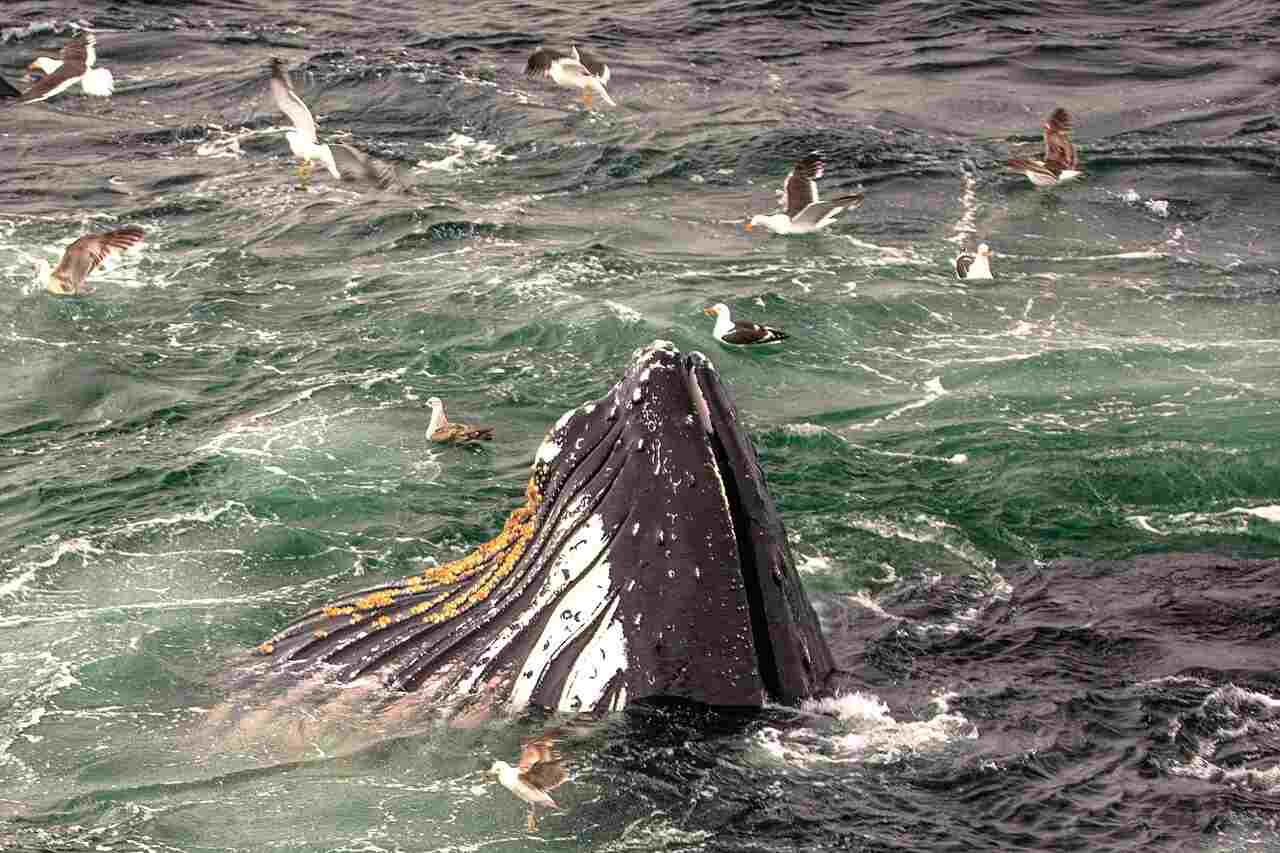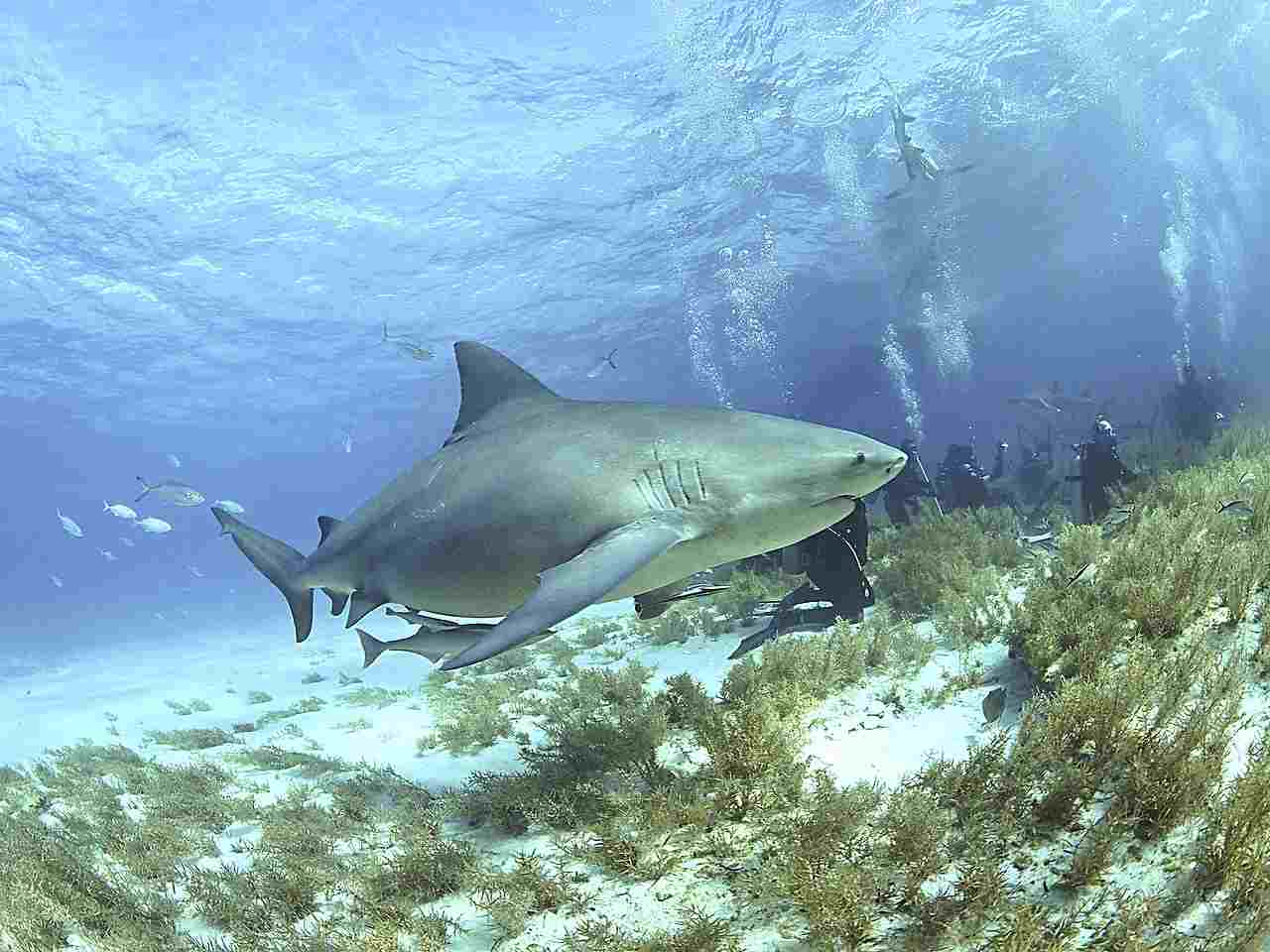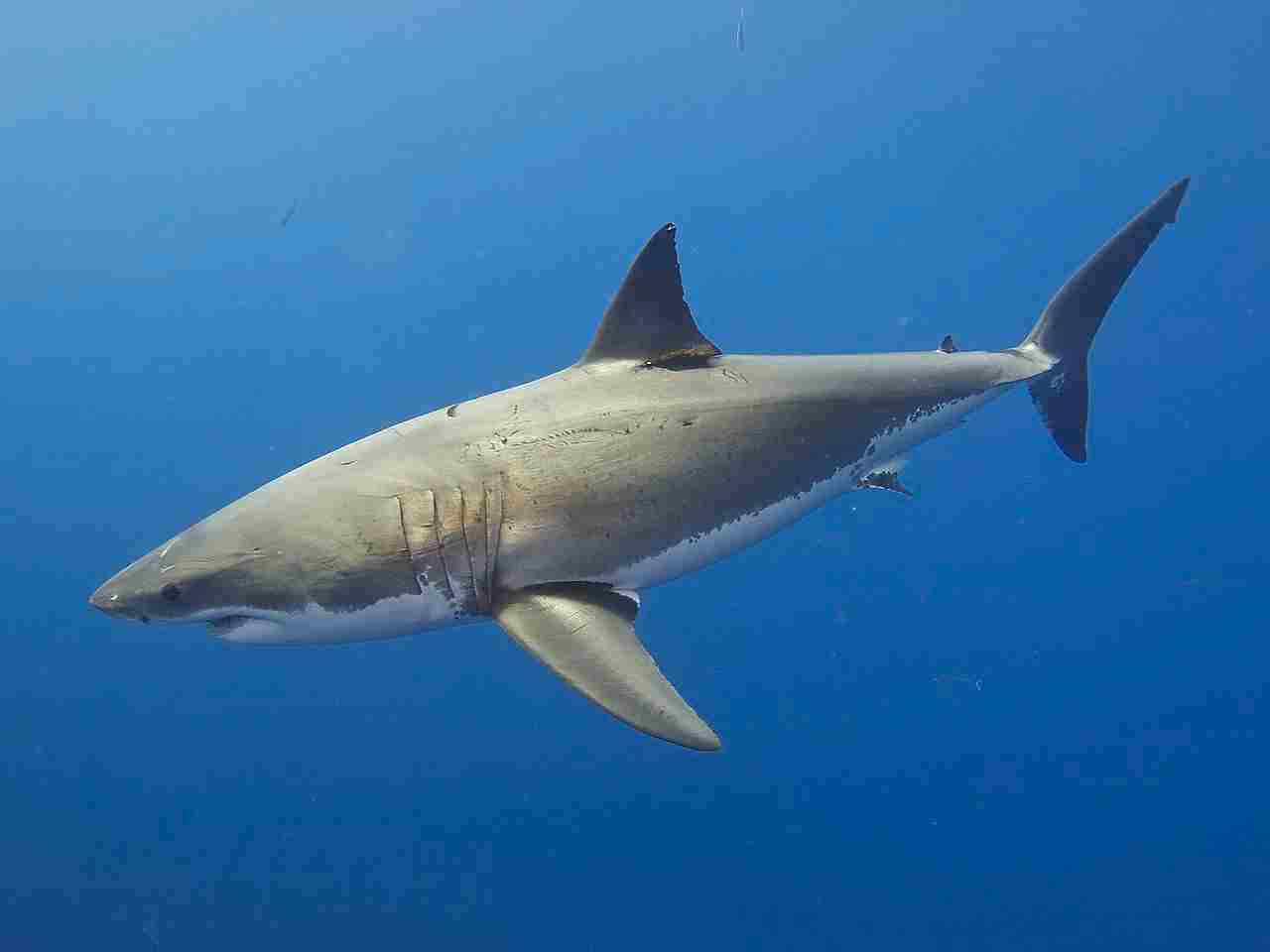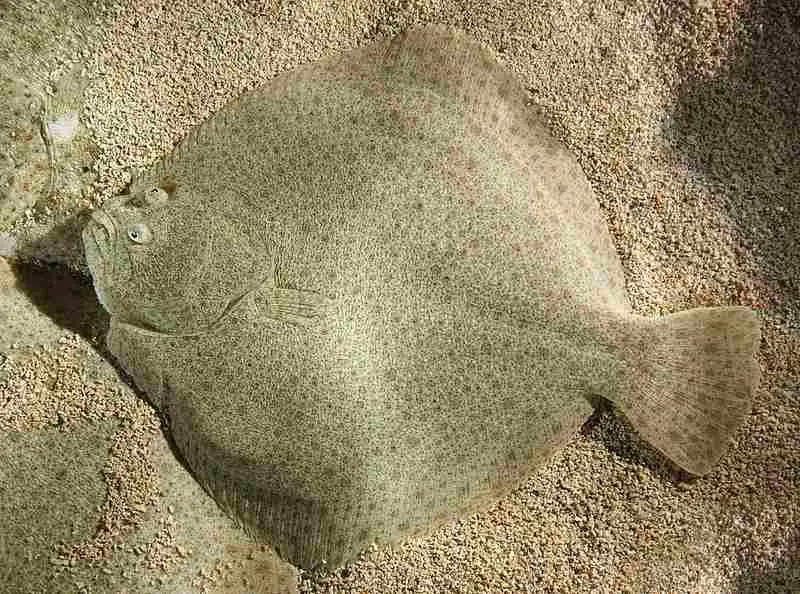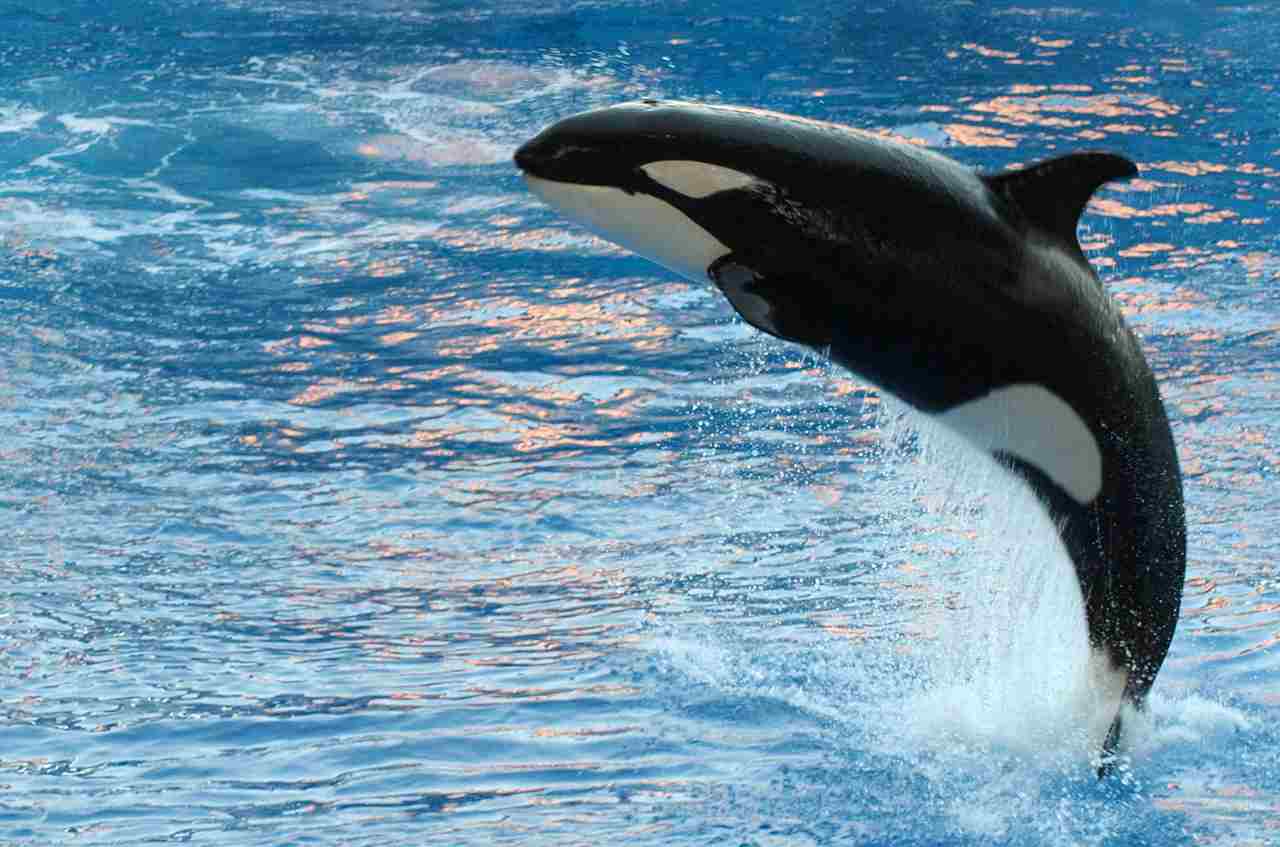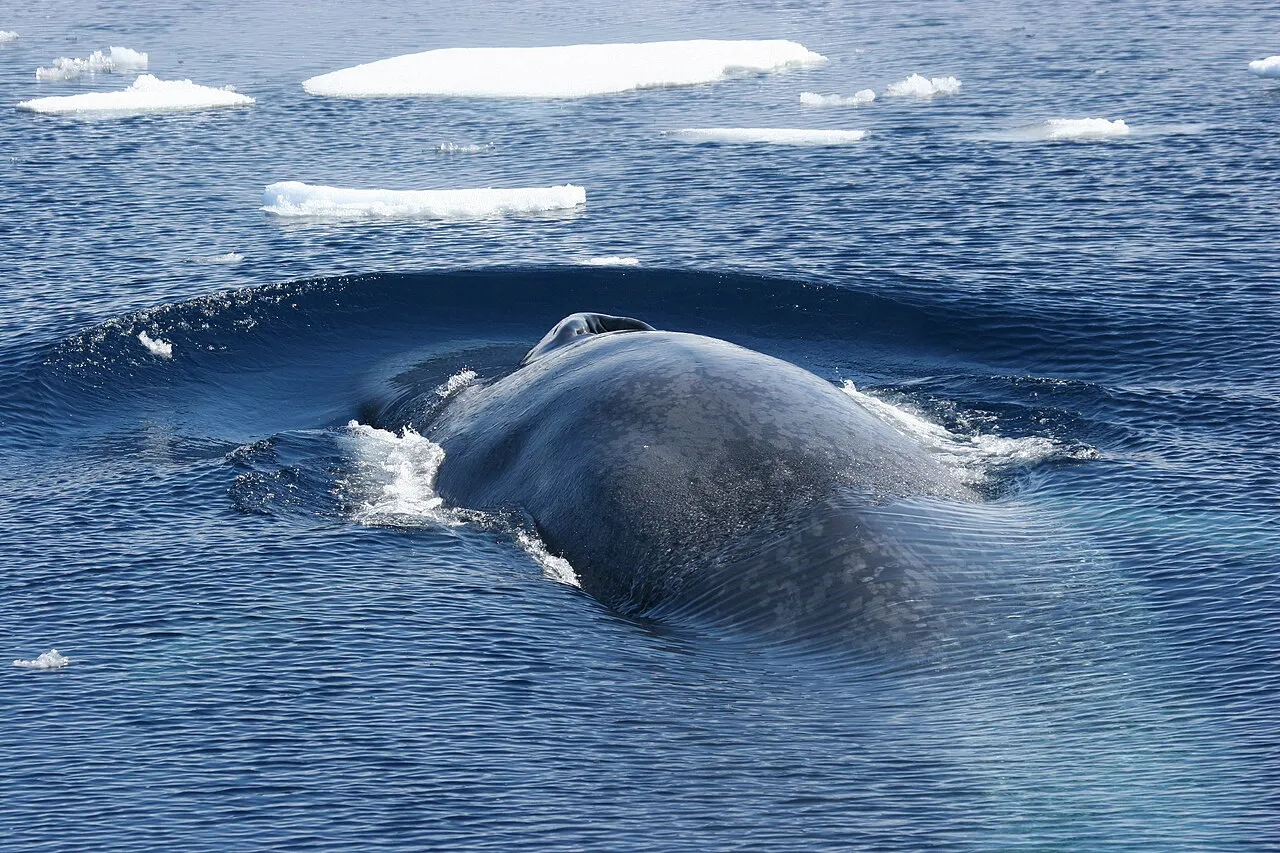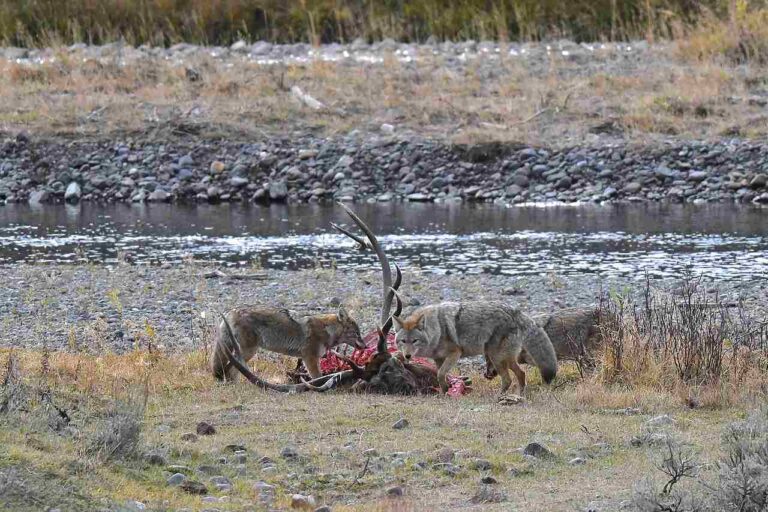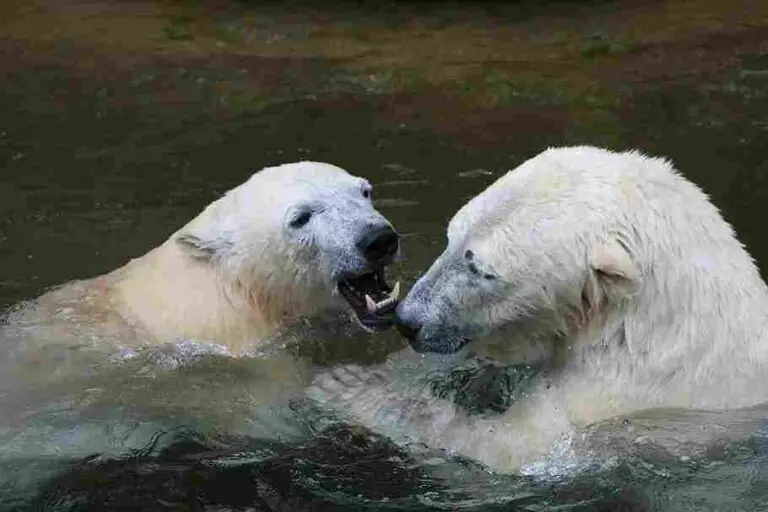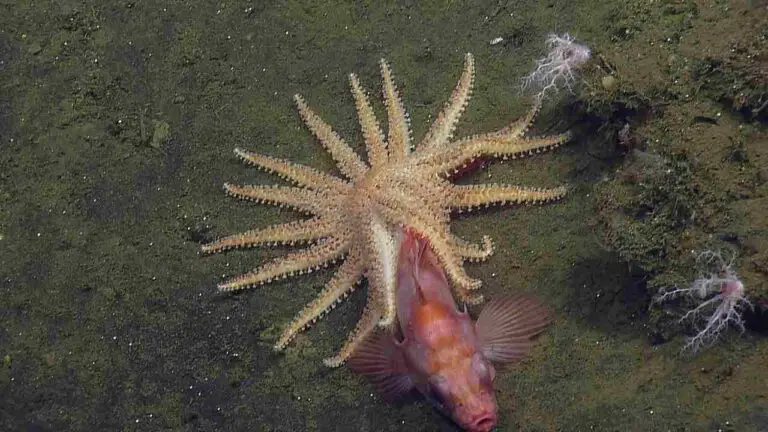11+ Carnivores in The Sea and Their Characteristics Discussed
Examples of carnivores in the sea include sea lions, fur seals, walruses, and sea otters. These marine mammals exhibit diverse hunting strategies, from chasing down fast-moving fish to foraging for benthic invertebrates. Additionally, sharks, orcas, and blue whales are formidable predators, playing vital roles in regulating marine ecosystems. Meanwhile, creatures like the giant Pacific octopus, tuna, swordfish, and barracuda showcase the remarkable diversity of carnivorous species in the ocean, each contributing to the intricate balance of marine food webs. Conservation efforts are crucial to safeguarding these carnivores and preserving the health of marine ecosystems worldwide.
1. Sea Lion
Sea lions, characterized by their sleek bodies, external ear flaps, and powerful flippers, are formidable carnivores inhabiting coastal waters and rocky shores across the globe. These marine mammals are highly skilled hunters, preying on a diverse array of fish, squid, and occasionally even seabirds. Their sharp teeth and strong jaws allow them to efficiently catch and consume their prey underwater.
Sea lions primarily hunt in shallow waters, utilizing their exceptional swimming abilities to chase down fast-moving fish. With acute vision both in and out of the water, they are adept at spotting prey from above the surface before diving in for the kill. Their streamlined bodies enable swift and agile movements, making them proficient hunters in their aquatic environment.
Despite their carnivorous nature, sea lions are also opportunistic feeders, known to scavenge on carcasses or steal catches from other predators. This adaptability contributes to their success in various marine ecosystems, from temperate coastal regions to the frigid waters of the Arctic.
The diet of sea lions varies depending on their geographical location and the availability of prey species. In some areas, they may predominantly target schooling fish like herring, anchovies, or salmon, while in others, they might focus on squid or crustaceans. This dietary flexibility allows them to thrive in diverse marine habitats, from bustling fishing grounds to remote offshore islands.
Overall, sea lions play a crucial role in maintaining the ecological balance of marine ecosystems, regulating prey populations and contributing to the overall health and diversity of coastal food webs. Their status as top predators underscores their significance in the delicate balance of oceanic environments, making them a fascinating subject of study and admiration for marine enthusiasts and scientists alike.
2. Fur Seal
Fur seals, close relatives of sea lions, are charismatic carnivores known for their thick fur coats and agile swimming abilities. These marine mammals primarily inhabit subpolar and temperate regions of the world’s oceans, where they play a vital role in marine ecosystems as top predators. With their streamlined bodies and powerful flippers, fur seals are well-equipped for hunting a wide range of prey, including fish, squid, and crustaceans.
Fur seals are highly social animals, often forming large colonies on remote islands or rocky shorelines where they breed and raise their young. During the breeding season, males engage in fierce territorial battles to establish dominance and secure mating opportunities with females. Despite their aggressive behavior towards each other, fur seals are skilled hunters, relying on their keen senses and underwater agility to locate and capture prey.
In the water, fur seals exhibit remarkable swimming prowess, capable of diving to significant depths in pursuit of food. Their flexible bodies and strong limbs enable them to navigate through underwater obstacles with ease, allowing them to hunt in both shallow coastal waters and deeper offshore environments. While they primarily feed on fish species such as anchovies, sardines, and herring, fur seals may also target squid and krill depending on local prey availability.
Like many marine predators, fur seals face various threats in their natural habitats, including overfishing, habitat degradation, and human disturbance. Conservation efforts aimed at protecting their breeding grounds and regulating fishing activities play a crucial role in ensuring the survival of these iconic marine mammals. By safeguarding fur seal populations, we can help maintain the health and integrity of marine ecosystems worldwide.
3. Walrus
The walrus, with its iconic tusks and bristly whiskers, is one of the largest carnivores in the sea, inhabiting the cold waters of the Arctic and subarctic regions. These massive pinnipeds are well-adapted to their icy environment, using their tusks to haul themselves onto sea ice and for various social and feeding behaviors. Despite their formidable appearance, walruses are primarily benthic feeders, foraging on the seafloor for a diverse array of prey.
Walruses are opportunistic hunters, targeting a wide range of bottom-dwelling organisms, including clams, mussels, snails, and other invertebrates. Using their sensitive whiskers, known as vibrissae, they detect prey hidden beneath the sandy or muddy seabed, using their strong suction abilities to suck up food from the substrate. This specialized feeding behavior allows walruses to thrive in their harsh Arctic habitat, where food resources can be scarce and unpredictable.
While walruses are predominantly benthic feeders, they may also opportunistically prey on fish, seals, and even small whales when the opportunity arises. However, their diet primarily consists of benthic invertebrates, which provide them with the necessary nutrients to survive and thrive in their frigid environment. Despite their massive size and impressive tusks, walruses are primarily gentle giants, spending much of their time resting on ice floes or in shallow coastal waters.
The conservation of walrus populations is critical for maintaining the ecological balance of Arctic marine ecosystems. As apex predators, walruses help regulate the abundance of benthic organisms, preventing overgrazing and maintaining the health of underwater habitats. By protecting their habitats and reducing human impacts such as pollution and habitat destruction, we can ensure the continued survival of these iconic marine mammals for future generations to admire and appreciate.
4. Sea Otter
Sea otters are charming and industrious carnivores that inhabit coastal waters along the Pacific Rim, from California to Alaska, as well as parts of Russia and Japan. These remarkable marine mammals play a crucial role in the health of coastal ecosystems, particularly kelp forests, where they are keystone species. With their dense fur coats and webbed feet, sea otters are perfectly adapted for life at the interface of land and sea, where they spend much of their time foraging for food.
Sea otters are voracious predators, primarily feeding on a diverse array of marine invertebrates, including sea urchins, crabs, clams, and abalones. Their dexterous forepaws, which they use like hands, allow them to manipulate and consume prey with remarkable efficiency. Sea otters are known to use rocks and other hard objects as tools to crack open the shells of their prey, demonstrating their ingenuity and adaptability as hunters.
In addition to their role as top predators, sea otters play a crucial role in maintaining the balance of coastal ecosystems, particularly in kelp forest habitats. By preying on sea urchins, which graze on kelp, sea otters help prevent overgrazing and promote the growth and health of kelp forests. Healthy kelp forests, in turn, provide habitat and food for a diverse array of marine species, supporting the overall biodiversity of coastal ecosystems.
Despite their ecological importance, sea otters face numerous threats, including habitat loss, pollution, and predation by sharks and killer whales. Conservation efforts aimed at protecting sea otter populations and their habitats are essential for ensuring the long-term survival of these charismatic marine mammals and the ecosystems they inhabit. By safeguarding sea otters, we can help preserve the health and resilience of coastal ecosystems for future generations to enjoy and appreciate.
5. Chungungo
The Chungungo, also known as the marine otter, is a small carnivorous mammal found along the rocky coastlines of South America, particularly in Chile and Peru. Despite their diminutive size, Chungungos are skilled hunters, specializing in capturing a variety of marine prey in their coastal habitats. With their sleek bodies and webbed feet, they navigate the rugged shoreline with agility, foraging in rocky crevices and tidal pools for their next meal.
Chungungos primarily feed on a diet of fish, crustaceans, mollusks, and other small marine organisms found in intertidal and shallow coastal waters. Their flexible bodies and sharp claws enable them to maneuver through rocky terrain and capture elusive prey hiding in crevices and under rocks. Despite their primarily solitary nature, Chungungos are social animals, often congregating in small groups to hunt or rest along the shoreline.
As apex predators in their coastal ecosystems, Chungungos play a crucial role in regulating prey populations and maintaining the health of marine habitats. By preying on herbivorous species such as sea urchins and crabs, they help prevent overgrazing and maintain the balance of rocky intertidal communities. Their presence in coastal ecosystems underscores the importance of protecting these unique habitats and the diverse array of species that rely on them for survival.
Conservation efforts aimed at preserving Chungungo populations and their coastal habitats are essential for ensuring the long-term survival of this endangered species. Threats such as habitat destruction, pollution, and overfishing pose significant challenges to their continued existence, highlighting the need for proactive measures to protect these charismatic marine mammals and the ecosystems they inhabit.
6. Shark
Sharks are iconic carnivores that have prowled the world’s oceans for millions of years, occupying a wide range of marine habitats from coastal waters to the open ocean. With their sleek bodies, powerful jaws, and keen senses, sharks are formidable predators at the top of the marine food chain. These apex predators play a crucial role in regulating marine ecosystems, influencing the abundance and distribution of prey species and maintaining the overall health of oceanic environments.
Sharks exhibit a remarkable diversity of feeding strategies and dietary preferences, with some species specializing in hunting fast-swimming fish, while others target marine mammals, seabirds, or even other sharks. From the stealthy ambush of the great white shark to the filter-feeding behavior of the whale shark, sharks have evolved a wide range of adaptations to suit their varied prey and habitats.
Despite their fearsome reputation, sharks are often misunderstood and face numerous threats, including overfishing, habitat degradation, and bycatch in commercial fishing gear. Conservation efforts aimed at protecting shark populations and their habitats are essential for ensuring the long-term survival of these iconic marine predators and the health of marine ecosystems worldwide. By implementing sustainable fishing practices, establishing marine protected areas, and raising awareness about the importance of sharks, we can help secure a brighter future for these magnificent creatures and the oceans they call home.
7. Orca
The orca, or killer whale, is one of the most formidable carnivores in the sea, renowned for its intelligence, social complexity, and predatory prowess. These apex predators inhabit oceans and seas around the world, from the icy waters of the Arctic to the tropical seas of the equator, where they play a crucial role in maintaining the balance of marine ecosystems.
Orca pods, comprised of individuals with distinct social structures and hunting strategies, cooperate to hunt a wide range of prey, including fish, squid, seals, sea lions, and even other whales. Their sophisticated communication and coordinated hunting tactics enable them to tackle prey much larger than themselves, making them one of the most successful predators in the marine environment.
Despite their formidable hunting abilities, orcas face numerous threats, including habitat degradation, pollution, and depletion of prey populations due to overfishing. Climate change also poses significant challenges to their survival, affecting the availability and distribution of prey species and altering marine ecosystems worldwide. Conservation efforts aimed at protecting orca populations and their habitats are essential for ensuring the long-term survival of these iconic marine mammals and the health of marine ecosystems worldwide. By addressing the root causes of threats to orcas and their habitats, we can help secure a brighter future for these magnificent predators and the oceans they inhabit.
8. Blue Whale
The blue whale, the largest animal on Earth, is a majestic carnivore that inhabits the world’s oceans, from polar regions to tropical seas. Despite their massive size, blue whales are filter feeders, primarily targeting tiny marine organisms such as krill and small fish. These gentle giants use baleen plates in their mouths to filter vast quantities of water, trapping their prey while expelling excess water through their baleen bristles.
Blue whales undertake epic migrations in search of seasonal food sources, traveling thousands of miles each year between feeding and breeding grounds. During the summer months, they congregate in polar regions where krill populations are abundant, while in the winter, they migrate to warmer waters for breeding and calving. Their migratory behavior is driven by the seasonal availability of prey and the need to find suitable breeding grounds for reproduction.
As apex predators in marine ecosystems, blue whales play a crucial role in regulating the abundance and distribution of krill populations, which are a vital component of the marine food web. By consuming vast quantities of krill, blue whales help maintain the balance of oceanic ecosystems, preventing overgrazing and promoting the health of marine habitats. Their status as keystone species underscores their importance in the intricate web of life in the oceans.
Despite their ecological significance, blue whales face numerous threats, including habitat degradation, pollution, and collisions with ships. Overfishing of krill, their primary food source, also poses a significant challenge to their survival, particularly as global demand for krill-based products increases. Conservation efforts aimed at protecting blue whale populations and their habitats are essential for ensuring the long-term survival of these magnificent marine mammals and the health of marine ecosystems worldwide.
9. Giant Pacific Octopus
The giant Pacific octopus is a fascinating carnivore that inhabits the cold waters of the North Pacific Ocean, from Alaska to Japan. With its eight powerful arms, keen intelligence, and remarkable camouflage abilities, the giant Pacific octopus is a formidable predator in its marine environment. These cephalopods primarily feed on a diverse array of prey, including crustaceans, fish, mollusks, and other octopuses.
Giant Pacific octopuses are highly skilled hunters, using their excellent eyesight and acute sense of touch to locate and capture prey in their rocky coastal habitats. Their flexible arms and powerful suckers enable them to manipulate and immobilize prey with remarkable precision, making them efficient predators in their underwater world. Despite their primarily solitary nature, giant Pacific octopuses may engage in cannibalistic behavior, particularly during mating or territorial disputes.
In addition to their hunting prowess, giant Pacific octopuses are masters of disguise, capable of changing color and texture to blend in with their surroundings and evade detection by predators. Their ability to mimic the appearance of rocks, coral, or algae helps them ambush unsuspecting prey and avoid detection by potential threats. This remarkable camouflage ability is a testament to their adaptability and survival skills in the dynamic marine environment.
Conservation efforts aimed at protecting giant Pacific octopus populations and their habitats are essential for ensuring the long-term survival of these fascinating marine creatures. Threats such as habitat destruction, pollution, and overfishing pose significant challenges to their survival, highlighting the need for proactive measures to protect their fragile marine ecosystems. By safeguarding giant Pacific octopuses and the diverse array of species that rely on them for survival, we can help preserve the health and integrity of marine ecosystems for future generations to appreciate and enjoy.
10. Tuna
Tuna are sleek and powerful carnivorous fish that inhabit the world’s oceans, from tropical to temperate waters. These fast-swimming predators are highly migratory, traversing vast distances in search of prey and suitable breeding grounds. With their streamlined bodies and powerful tails, tuna are formidable hunters, capable of chasing down a wide range of prey, including smaller fish, squid, and crustaceans.
Tuna exhibit a remarkable diversity of species, each with its own unique adaptations and hunting strategies. From the lightning-fast speeds of the yellowfin tuna to the deep-diving capabilities of the bluefin tuna, these fish have evolved a wide range of behaviors to suit their varied prey and habitats. Tuna are also known for their voracious appetites, consuming large quantities of food to fuel their energy-intensive lifestyles.
As apex predators in marine ecosystems, tuna play a crucial role in regulating prey populations and maintaining the balance of oceanic food webs. By controlling the abundance and distribution of smaller fish and other prey species, tuna help prevent overgrazing and promote the health of marine habitats. Their status as keystone species underscores their importance in the intricate web of life in the oceans.
Despite their ecological significance, tuna face numerous threats, including overfishing, habitat destruction, and pollution. Industrial fishing practices, such as longlining and purse seining, pose particular risks to tuna populations, leading to declines in some species’ numbers. Conservation efforts aimed at protecting tuna populations and their habitats are essential for ensuring the long-term sustainability of these iconic marine fish and the health of marine ecosystems worldwide. By implementing sustainable fishing practices, establishing marine protected areas, and reducing anthropogenic impacts on their habitats, we can help secure a brighter future for tuna and the oceans they call home.
11. Swordfish
Swordfish are majestic and powerful carnivorous fish that roam the world’s oceans, from tropical to temperate waters. Named for their distinctive long, sword-like bills, swordfish are formidable predators capable of taking down a wide range of prey, including fish, squid, and crustaceans. With their streamlined bodies and powerful swimming abilities, swordfish are highly efficient hunters, using their sword-like bills to slash and stun prey before consuming them.
Swordfish are apex predators in marine ecosystems, occupying the top of the food chain and playing a crucial role in regulating prey populations. Their voracious appetites and broad dietary preferences make them important predators in oceanic food webs, influencing the abundance and distribution of prey species. Swordfish are also known for their remarkable endurance and speed, capable of swimming at high speeds for extended periods in pursuit of prey.
Despite their formidable hunting abilities, swordfish face numerous threats, including overfishing, habitat degradation, and bycatch in commercial fishing gear. Industrial fishing practices, such as longlining and drift gillnetting, pose particular risks to swordfish populations, leading to declines in some regions. Conservation efforts aimed at protecting swordfish populations and their habitats are essential for ensuring the long-term sustainability of these iconic marine predators and the health of marine ecosystems worldwide. By implementing sustainable fishing practices, establishing marine protected areas, and reducing anthropogenic impacts on their habitats, we can help secure a brighter future for swordfish and the oceans they inhabit.
12. Dolphin
Dolphins are highly intelligent and social carnivorous mammals that inhabit oceans and seas worldwide, from coastal waters to the open ocean. These charismatic marine mammals are known for their playful behavior, acrobatic displays, and remarkable communication skills. Dolphins are also formidable predators, hunting a wide range of prey, including fish, squid, and crustaceans, using their keen senses and coordinated hunting tactics.
Dolphins exhibit complex social structures and behaviors, often forming tight-knit pods or groups that cooperate to hunt and defend against predators. Their sophisticated communication and echolocation abilities enable them to navigate and locate prey in the vast expanse of the ocean, making them highly efficient hunters in their marine environment. Dolphins are also known for their altruistic behavior, often coming to the aid of injured or distressed individuals within their pod.
As apex predators in marine ecosystems, dolphins play a crucial role in regulating prey populations and maintaining the balance of oceanic food webs. By controlling the abundance and distribution of prey species, dolphins help prevent overgrazing and promote the health of marine habitats. Their status as keystone species underscores their importance in the intricate web of life in the oceans.
Despite their ecological significance, dolphins face numerous threats, including habitat destruction, pollution, climate change, and accidental entanglement in fishing gear. Conservation efforts aimed at protecting dolphin populations and their habitats are essential for ensuring the long-term survival of these iconic marine mammals and the health of marine ecosystems worldwide. By implementing measures to reduce anthropogenic impacts on their habitats and mitigate threats such as bycatch and pollution, we can help secure a brighter future for dolphins and the oceans they call home.
13. Barracuda
Barracudas are sleek and ferocious carnivorous fish that inhabit tropical and subtropical waters around the world. With their torpedo-shaped bodies, sharp teeth, and lightning-fast speeds, barracudas are formidable predators capable of striking fear into their prey. These apex predators primarily feed on smaller fish, using their speed and agility to ambush and capture their victims with lightning-fast strikes.
Barracudas are solitary hunters, often patrolling coral reefs, seagrass beds, and open water in search of prey. Their keen senses and excellent eyesight enable them to detect the slightest movement or disturbance in the water, allowing them to pinpoint the location of potential prey with precision. Barracudas are also known for their voracious appetites, consuming large quantities of food to fuel their energy-intensive lifestyles.
As apex predators in marine ecosystems, barracudas play a crucial role in regulating prey populations and maintaining the balance of reef and pelagic food webs. By controlling the abundance and distribution of smaller fish and other prey species, barracudas help prevent overgrazing and promote the health of marine habitats. Their status as keystone species underscores their importance in the intricate web of life in tropical and subtropical oceans.
Despite their ecological significance, barracudas face numerous threats, including habitat destruction, overfishing, and pollution. Industrial fishing practices, such as gillnetting and trawling, pose particular risks to barracuda populations, leading to declines in some regions. Conservation efforts aimed at protecting barracuda populations and their habitats are essential for ensuring the long-term sustainability of these iconic marine predators and the health of marine ecosystems worldwide. By implementing sustainable fishing practices, establishing marine protected areas, and reducing anthropogenic impacts on their habitats, we can help secure a brighter future for barracudas and the oceans they inhabit.
*Summary
-
Sea Lion:
-
Sleek marine mammals with powerful flippers.
-
Skilled hunters, primarily targeting fish, squid, and occasionally seabirds.
-
Hunt in shallow waters with acute vision and agility.
-
-
Fur Seal:
-
Close relatives of sea lions, with thick fur coats.
-
Formidable hunters, feeding on fish, squid, and crustaceans.
-
Highly social animals, forming large colonies for breeding and hunting.
-
-
Walrus:
-
Massive pinnipeds with iconic tusks.
-
Specialize in hunting benthic invertebrates like clams and mussels.
-
Vital for regulating Arctic marine ecosystems.
-
-
Sea Otter:
-
Charismatic marine mammals found along the Pacific Rim.
-
Feed on marine invertebrates, using tools to crack open shells.
-
Keystone species in kelp forest habitats, maintaining ecosystem balance.
-
-
Chungungo (Marine Otter):
-
Small carnivorous mammals found along South American coastlines.
-
Skilled hunters of fish, crustaceans, and mollusks.
-
Endangered species facing threats from habitat destruction and pollution.
-
-
Shark:
-
Apex predators with diverse hunting strategies.
-
Crucial for regulating marine food webs and maintaining ecosystem health.
-
Face threats from overfishing, habitat degradation, and pollution.
-
-
Orca (Killer Whale):
-
Formidable predators with complex social structures.
-
Cooperative hunters targeting a wide range of prey species.
-
Essential for maintaining balance in marine ecosystems.
-
-
Blue Whale:
-
Largest animals on Earth, primarily feeding on krill.
-
Undertake epic migrations to find food and breeding grounds.
-
Vital for regulating krill populations and oceanic ecosystems.
-
-
Giant Pacific Octopus:
-
Intelligent hunters with remarkable camouflage abilities.
-
Feed on a variety of prey, including crustaceans, fish, and mollusks.
-
Face threats from habitat destruction and overfishing.
-
-
Tuna:
-
Fast-swimming carnivorous fish with diverse species.
-
Play a crucial role in regulating prey populations in marine ecosystems.
-
Threatened by overfishing and habitat degradation.
-
-
Swordfish:
-
Powerful fish with distinctive sword-like bills.
-
Formidable predators hunting a wide range of prey.
-
Face threats from overfishing and habitat degradation.
-
-
Dolphin:
-
Highly intelligent and social marine mammals.
-
Skilled hunters with complex communication and echolocation abilities.
-
Crucial for maintaining the balance of marine ecosystems.
-
-
Barracuda:
-
Sleek and ferocious carnivorous fish found in tropical waters.
-
Predators of smaller fish, using speed and ambush tactics.
-
Face threats from overfishing and habitat destruction.
-
| Carnivores in the Sea | Summary |
| Sea Lion |
Sleek marine mammals hunting fish, squid, and seabirds in shallow waters.
|
| Fur Seal |
Social marine mammals with thick fur coats, hunting fish, squid, and crustaceans.
|
| Walrus |
Massive pinnipeds specializing in benthic invertebrates, vital for Arctic ecosystems.
|
| Sea Otter |
Charismatic mammals feeding on marine invertebrates, keystone species in kelp forests.
|
| Chungungo |
Small South American mammals hunting fish, crustaceans, and mollusks.
|
| Shark |
Apex predators with diverse hunting strategies, vital for marine ecosystem balance.
|
| Orca |
Formidable predators with complex social structures, crucial for ecosystem health.
|
| Blue Whale |
Largest animals feeding on krill, undertake epic migrations, regulate marine ecosystems.
|
| Giant Pacific Octopus |
Intelligent hunters with remarkable camouflage abilities, feed on crustaceans and fish.
|
| Tuna |
Fast-swimming fish regulating prey populations, threatened by overfishing.
|
| Swordfish |
Powerful fish hunting a variety of prey, facing threats from overfishing.
|
| Dolphin |
Highly intelligent marine mammals crucial for marine ecosystem balance.
|
| Barracuda |
Sleek fish predating on smaller fish, threatened by overfishing.
|
Related FAQs
-
Why are sea lions called sea lions?
-
Sea lions are called so due to the lion-like roars they produce, especially during the mating season. Additionally, their mane-like fur around their necks resembles a lion’s mane.
-
-
What do fur seals eat?
-
Fur seals primarily feed on fish, squid, and crustaceans. Their diet may vary depending on their geographical location and the availability of prey species.
-
-
How do walruses hunt for food?
-
Walruses are primarily benthic feeders, foraging on the seafloor for a variety of prey, including clams, mussels, snails, and other invertebrates. They use their sensitive whiskers to detect prey hidden beneath the substrate and use their strong suction abilities to suck up food from the seabed.
-
-
Do sea otters use tools?
-
Yes, sea otters are known to use tools, such as rocks and other hard objects, to crack open the shells of their prey, particularly mollusks like clams and abalones.
-
-
What is unique about the hunting behavior of orcas?
-
Orcas, also known as killer whales, exhibit complex social structures and cooperative hunting tactics. They work together in pods to hunt a wide range of prey species, including fish, seals, sea lions, and even other whales. Their sophisticated communication and coordinated hunting strategies make them highly efficient predators.
-
-
How do blue whales feed?
-
Blue whales are filter feeders that primarily feed on krill. They use baleen plates in their mouths to filter vast quantities of water, trapping krill while expelling excess water through their baleen bristles.
-
-
What is echolocation, and how do dolphins use it?
-
Echolocation is a biological sonar system used by dolphins and other marine mammals to navigate and locate prey in their environment. Dolphins emit high-frequency sound waves and listen for the echoes bouncing off objects, allowing them to “see” their surroundings even in murky waters or darkness.
-
-
How do swordfish use their bills for hunting?
-
Swordfish use their distinctive sword-like bills to slash and stun prey before consuming them. Their bills are powerful weapons that enable them to immobilize prey with lightning-fast strikes.
-
-
Why are barracudas considered dangerous?
-
Barracudas are considered dangerous due to their sharp teeth, lightning-fast speeds, and aggressive hunting behavior. While attacks on humans are rare, barracudas have been known to strike at shiny objects, including jewelry, leading to accidental injuries.
-
-
Are there any conservation efforts in place for these carnivores in the sea?
-
Yes, there are various conservation efforts aimed at protecting marine carnivores and their habitats. These include measures such as establishing marine protected areas, implementing sustainable fishing practices, reducing pollution, and raising awareness about the importance of marine conservation.
-
